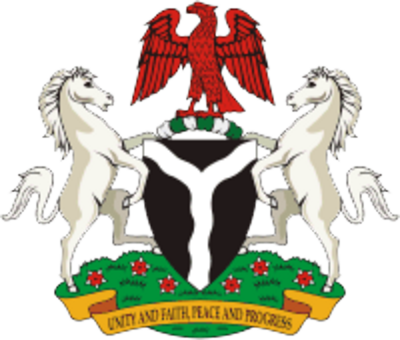Introduction
The 1914 Amalgamation that occurred shortly after the naming of Nigeria was one of the significant moments for British administration in Africa and a pivotal one for colonial Nigeria. Before this event, the Nigerian state had been a political entity with numerous diversities which made governance difficult. The Southern Protectorate, the Northern Protectorate and the Colony of Lagos all had their own separate styles of government. This regional structure meant different laws were applicable in the Protectorates and in the Colony of Lagos. The Protectorates and the Colony of Lagos were quite self-autonomous and governing them with different laws proved quite a task. As a result, the Nigeria 1914 Amalgamation merged the different parts of the country in order to make governance easier for the colonial rulers.It should also be noted that years of deliberations went into the amalgamation of Nigeria and the decision should not be considered a spontaneous move by the British. Sir Frederick Lugard first thought about merging the different parts of the country ten years before he became the Governor-General of the country. As the High Commissioner of the Northern Nigerian, Sir Frederick Lugard noticed the tribal acrimony that existed between the different parts of the country and how enactment and execution of national policies got delayed. Lugard was not the only one who believed Nigeria urgently needed to be integrated in order to avoid her absolute collapse. Notable British colonial officers such as Sir William Macgregor (Governor of Lagos) and Sir Ralph Moore (High Commissioner of Southern Nigeria) concurred with Lugard and strongly advocated for amalgamation. However, the Queen of England and the British government never saw a reason to do so yet.

Hope for Amalgamation
When Lugard became the Governor of the Southern Protectorate in 1912, he got the attention of Mr Lewis Vernon Harcourt, the then Secretary of State for the Colonies. Harcourt agreed with Lugard that it was important that the different regions merge in order to help govern the country more effectively. Sometime in 1913, Harcourt assigned Lugard, Amalgamation’s frontline advocate, to conduct an elaborate field work of the country and determine if the different regions should be united. Harcourt requested that Lugard must first be acquainted with the local conditions of the Northern and Southern Protectorate before a proposal for Amalgamation is submitted to the Queen. After nearly a year of thorough field work, Lugard submitted his detailed proposal for Amalgamation on May 9th, 1913.
Changes Amalgamation Brought
Amalgamation of Nigeria in 1914 brought a lot of changes to both the British administration in Nigeria and to the Nigerian citizens. Some of the key changes were- The Colony and the Protectorates fell under one government. This restructuring was the most sought after change that Lugard and his amalgamation advocates had in mind when they pushed for the Amalgamation of the South and the North. More importantly, the need for one government was also to consolidate the contentious railway policy of the Northern and Southern Protectorates in order to further facilitate a swift transportation of goods.
- New nomenclatures were provided to different parts of the country. The Northern and Southern Protectorates were changed to the Northern Provinces and Southern Provinces respectively.
- Newly established Provinces (previously known as Protectorates) now fell under the leadership of Lieutenant-Generals (formerly under Governors) who reported directly to Governor Generals. A Governor General is the equivalent of a President in our present democracy. Mr A.G Boyle was the Lieutenant-General of Southern Provinces, while Mr C.L Temple was Lieutenant-General of Northern Provinces.
- The central headquarters of the unified government was in Lagos. The Governor-General shuttled between the unit stations of the Northern and Southern Provinces from Lagos. This was also the period that Lagos became the capital of the country until the capital got moved to Abuja in 1991.

“. . . and (Lugard) left the country finally in 1918. In effect, he had only four years to give effect to the amalgamation and introduce a central administration which was claimed to be the central objective of the amalgamation. He failed . . . in this respect. He had limited time for the task . . .”Fafowora based the partial failure of the Amalgamation on the limited time Lugard had to enforce the policy. In addition, Lugard was also accused of leading the country with most of his time spent in England, a place far removed from the more perplexing realities of Nigeria. It has been noted that his team will often delay making key decisions until he returned from his stay in England. Those who endorsed the amalgamation claim that the move allowed for the integration of services across the Northern and Southern Provinces and also helped bring the judicial and legal departments under the control of a lone Central Secretariat in Lagos. The 1914 Amalgamation was very much a needed policy during the British rule. It could not have come at a better time in Nigeria’s colonial history. Nigeria at that time was in a dire need of a policy that could unify the different rival policies that were springing up in different parts of the country as a result of the decentralised system of government that was in place. Many believe that Lugard, with the 1914 Amalgamation, set forward the motion for Nigeria’s gradual development to independence which was eventually granted in 1960.
The Journey to the Amalgamation of Nigeria
As Nigeria builds up to the events surrounding the centenary celebration of Nigeria’s existence as a geographical and political construct. We found this documentary which talks about Nigeria’s journey from pre-colonial Nigeria to the individual stories.







No comments: